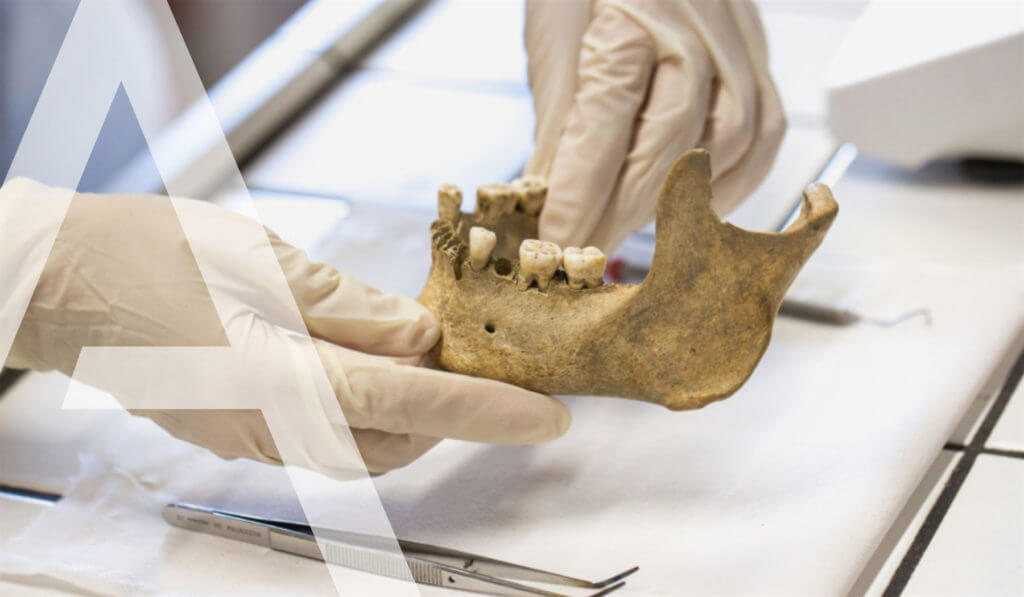How to date the bones by Carbon 14?
Bones are, along with charcoal and ceramics, the most common materials uncovered in archaeological excavations. They are ideally suited for radiocarbon dating by mass spectrometry (AMS).

Why C14 for bone dating?
Carbon-14, or radiocarbon, dating is the most familiar dating method to the general public, but it is especially the most relevant technique for dating organic materials, and in particular bones. Carbon-14 dating was developed in the 1940s and is based, like most dating methods, on radioactivity.
The amount of carbon is stable for living things, because on the one hand carbon-14 decays, but on the other hand it is reintegrated through respiration or photosynthesis. Therefore, C14 dating will date the death of the individual or plant, and the amount of C14 remaining will allow the date of death to be estimated.
Collagen Extraction and Dating
Bones are very good chronological markers in an archaeological excavation, as they are closely related to the stratigraphy in which they are found. A bone is composed of a mineral part, bioapatite, and an organic part, collagen. It is the collagen that is the most appropriate and normally used fraction for radiocarbon dating.
The pre-dating step will therefore be the extraction of collagen. For this purpose, they are treated with cold hydrochloric acid (HCl, 1 M) for 24 h, in order to remove any surface contamination and partially deteriorate the mineral part of the bone, thus making the collagen extraction more efficient. The samples were then treated with sodium hydroxide (0.1 M) at room temperature and again treated with cold hydrochloric acid, to avoid absorption of atmospheric carbon dioxide. After washing with deionized water, the samples are boiled to dissolve and then recover the collagen.
The extracted collagen undergoes combustion at 920°C and is converted to gas. During this step, an initial check of the C/N ratio is performed using an elemental analyzer (Elementar Vario ISOTOPE Select). This step is essential, as it constitutes a quality control.
In effect, the value of the C/N ratio between 2.9 and 3.6 indicates that the calogen is well preserved and that it will provide a reliable dating. If the C/N ratio is outside this range, the C14 dating of the collagen will not be performed. In this case, the mineral part of the bone will have to be used and the bioapatite will have to be dated.
Then, stable carbon and nitrogen isotope analysis will be performed by IRMS. These values will provide information on the diet of the individuals. At the same time, the carbon dioxide from the combustion is separated from other residues using a zeolite trap. Then, this carbon dioxide is transformed into graphite using an automated system (AGE 3, Ion Plus) by catalysis.
